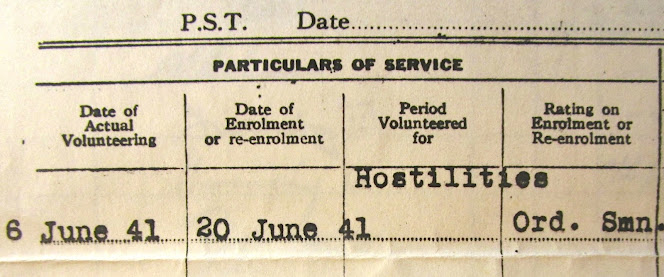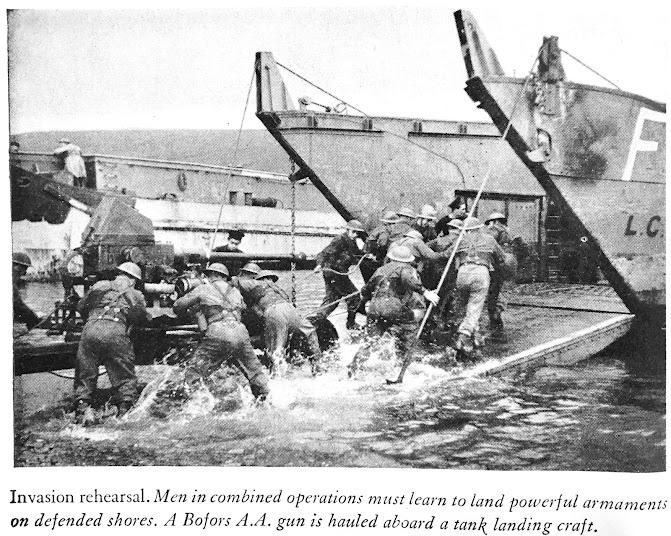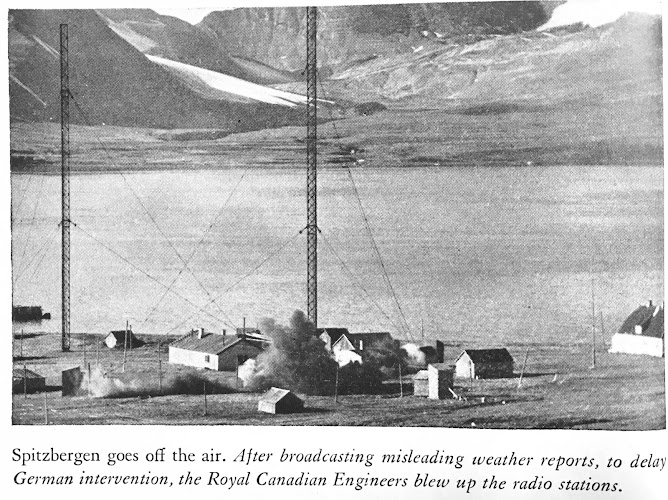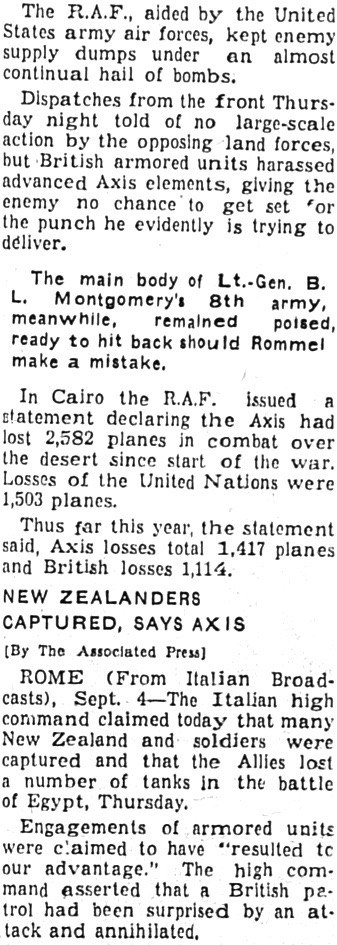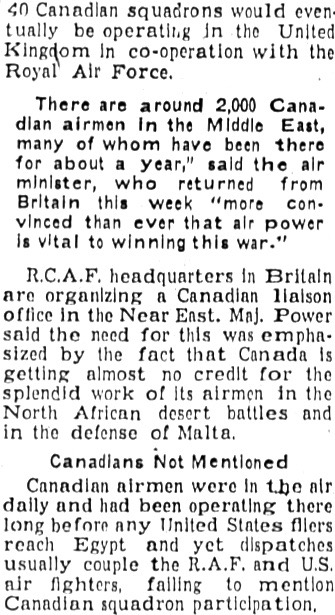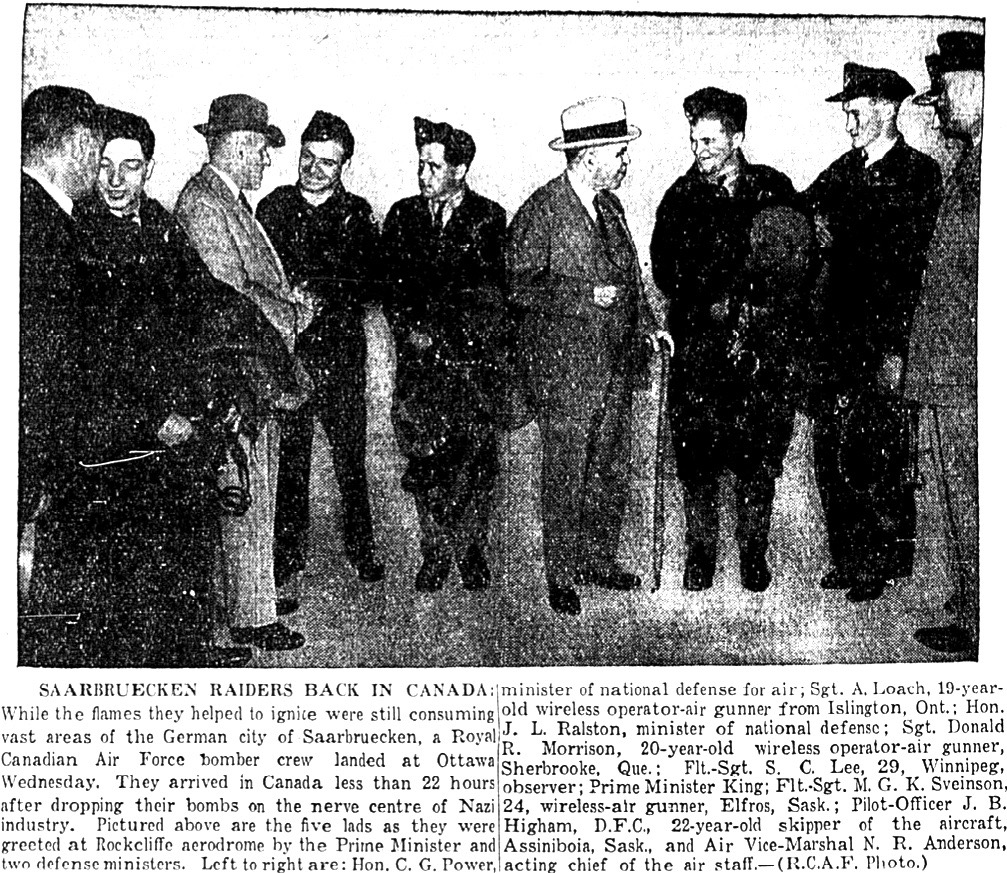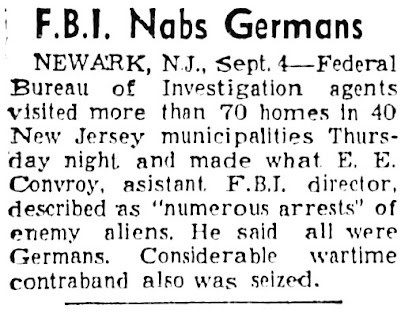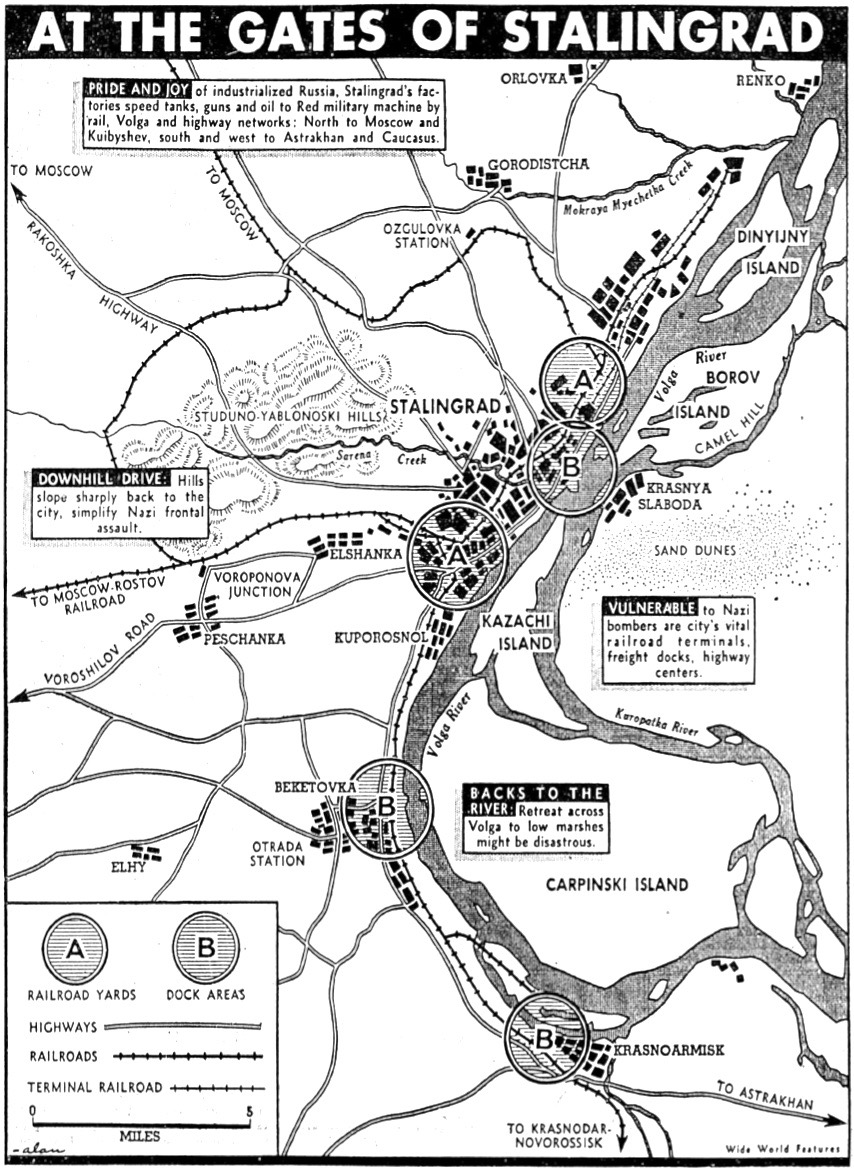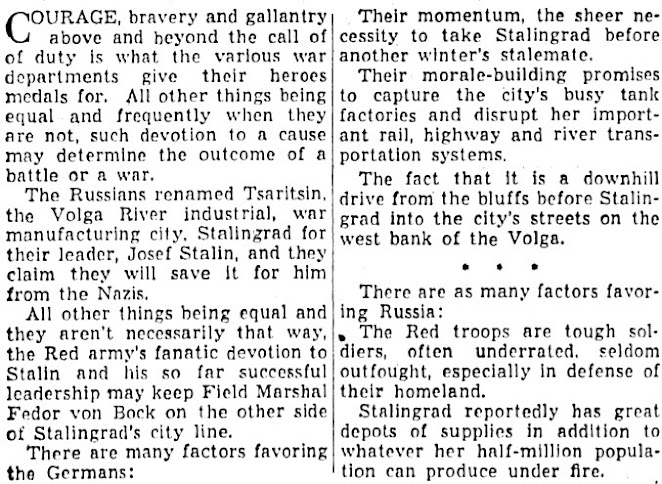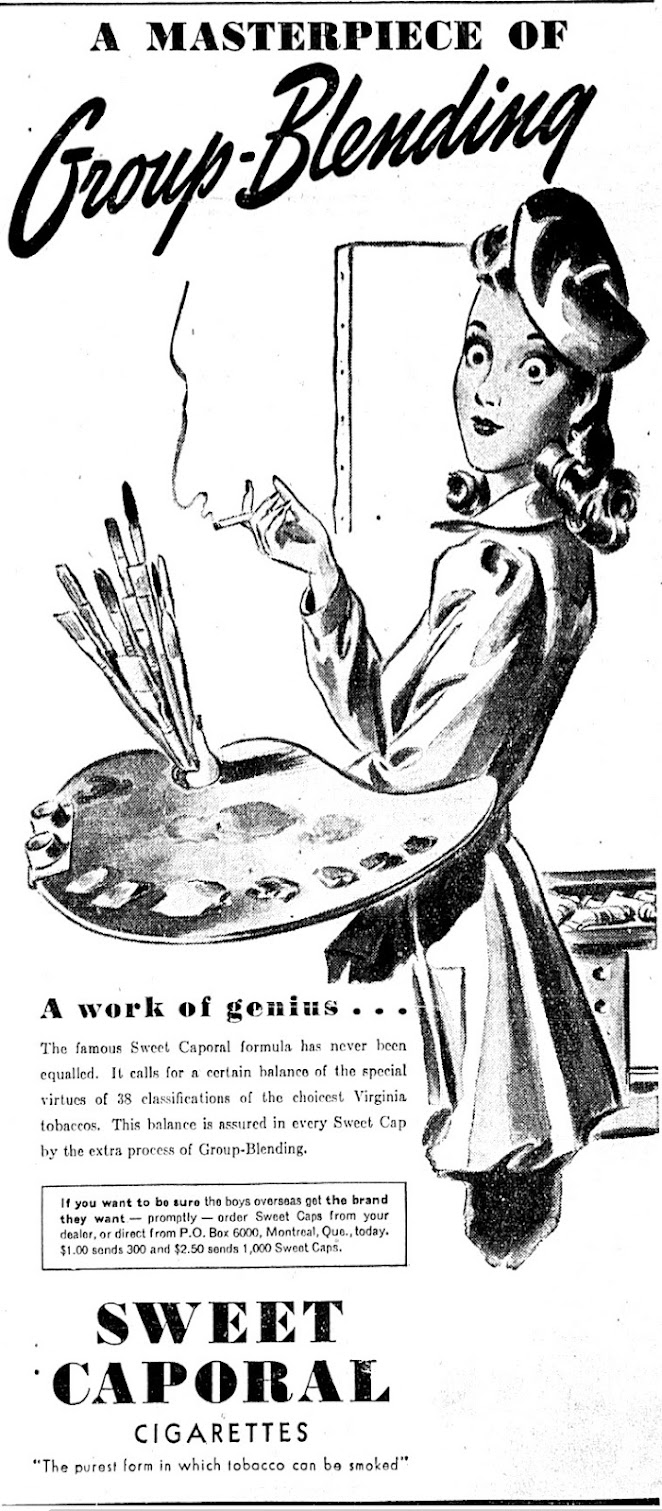Written by Hilary St. George Saunders, Also Author of
The Green Beret, The Story of the Commandos 1940-45


Evelyn Waugh, a writer of some significance, informs readers
who the "Anonymous" Author of the book is, on its back cover
Introduction:
When I purchased the book Combined Operations: The Official story of the Commandos I didn't think I'd seen it before even though some of the photographs and maps between the covers seemed familiar. After reading it I felt that much of the history seemed familiar as well. But was it from snippets I'd read before in other books, including another by Mr. Hilary St. George Saunders, or some written by others? It was hard to tell until I scanned my bookshelf very closely just the other day.Yes, there may have been "snippets I'd read before" or something very similar because Mr. St. George Saunders is also the author of The Green Beret: The Story of the Commandos 1940 - 1945, first published in October, 1949.
A review for this informative text will appear here in the near future
'One Shilling Net' is a great price if you can still get it!
I think I paid a bit more than that on AbeBooks.com
Table of Contents, List of Illustrations and more are identical but the
Comb. Ops insignia colours are reversed, and some pics are different
Below are a few excerpts and photographs from the book that now comes even more highly recommended than it did in December, 2016:
From the Foreword -
London, April 11 (by Cable) -
This record contains some account of combined operations in general, and of the exploits of the Command which bears that name.
As found in Foreword, Combined Operations, page v
Found in Combined Operations, pg. 16-17. Depicted is one of many exercises
held at HMS Quebec, No. 1 Comb. Ops Training Camp, Inveraray, Scotland
(Canadians in Comb. Ops arrived there for training in early spring, 1942)
The book details the planning and execution of initial small raids and then subsequent larger raids. The first action for which Canadians in Combined Ops were trained was the Dieppe Raid (August, 1942), followed by Operation TORCH, the invasion of North Africa. Important details related to both 'amphibious operations' are found in the book.
As found in Foreword, Combined Operations, page v
On page v we also read the following:
The Command has its own forces, of which the Commandos and landing craft crews form a part.
Canadian sailors, along with men from many other nations passed through C.O. training centres in order to become familiar with the handling of various landing crafts and much more. (My father said he "trained like a Commando but I wasn't a Commando." He handled many early landing crafts, often an LCM or Landing Craft, Mechanised) in North Africa, Sicily and Italy, 1942 - 1943:
As found in Foreword, Combined Operations, page v
Landing Craft Mechanised being inspected by RN or RCN sailors at
one of the many Comb. Ops training camps in the UK. Photo - IWM
Canadians who volunteered for Combined Operations Command in late 1941 were soon taken to the UK and shortly after arrival were introduced to various types of landing craft, e.g., at HMS Northney (on Hayling Island, southern England) and then at HMS Quebec (on Loch Fyne, just south of Inveraray, Scotland). My father's memoirs touch on many of the details found below, from page 12 in Combined Operations: The Official Story...
The tide is very important and constantly watched. If it is going out (on the ebb) and you are slow, you can be left high and dry, and if so, you stay with the barge. If the tide is on the make (flowing in) you use the kedge to keep you from swinging sideways on breach. In this case your kedge would be out only a short ways. After much practice, however, the kedge can be forgotten and everything done by engines and helm. Each barge has two engines.
"Dad, Well Done," page 26
 Photo as found in The Winnipeg Tribune, Sept. 1, 1942. "Such modern
Photo as found in The Winnipeg Tribune, Sept. 1, 1942. "Such modern
"One of the most important and dangerous duties is that performed by the Beachmaster and his opposite number (or 'oppo' in Navy lingo), the Military Landing Officer. They work as a team and their task is to control the beaches with the help of Assistant Beachmasters and Unit Landing Officers. They must see that the beach is clearly marked so that craft moving in later will not mistake it; they must discover and mark the best exits from it towards the country behind; they must attend to craft coming ashore, to the hauling-away of vehicles which may have become stuck in the sand or shingle and to the re-floating of craft aground.
About his early days of training my father wrote the following (I think it proves he was watching and listening closely during many practice sessions):
We did much running up on beaches so soldiers could disembark and re-embark, always watching the tide if it was flowing in or going out. You could be easily left high and dry, or broach too, if you weren’t constantly alert. We took long trips at night in close single formation, like ducks closed up close, because all you could see was the florescent waters churned up by propellors of an ALC or LCM (landing craft mechanized) ahead.
"Dad, Well Done," page 26
Sounds like he was reading from the same play book as mentioned in the earlier excerpts.
A recent research find, a photo re the use of Landing Craft, Tanks (LCTs) during the Dieppe raid, also revealed the use of small bulldozers, which connects with another paragraph from Combined Operations: The Official Story...:
 Photo as found in The Winnipeg Tribune, Sept. 1, 1942. "Such modern
Photo as found in The Winnipeg Tribune, Sept. 1, 1942. "Such moderncarriers make tank transport efficient." Photo Credit - N.E.A.
For this and other purposes the Bulldozer, a small tracked vehicle with a movable steel shovel in front of it and tremendous pushing power, is invaluable.
It is the Beachmasters who call in the boats to take off the men returning from a raid; while on the beaches they are, indeed, at once the constable on point duty and the foreman in charge of the delivery van.
Combined Operations: The Official Story..., pages 12 - 13
Please click here to read a story by Ross Munro that includes an interview with a Canadian (David Lewis) in Combined Operations who was a Beachmaster at Dieppe.
The book does not cover all of the operations in which Commandos were involved (or Canadians in Combined Ops) because it was published in 1943*. The table of contents reveals - to a degree - the extent of its coverage:
[*re 1943 - Q: How could it be "the Official story" if it was published before all of the operations in which Commandos were involved during WWII had not taken place?]
Photo of Contents as found on page xi
I confess to being biased, in favour of this book. It deals with the early days of Commandos, as does my father to the early days of Canadians who enlisted in Combined Operations (he volunteered with approx. 50 - 60 other members of RCNVR while training in Halifax, near the end of 1941), and the two groups of men worked together as early as the spring of 1942 in the C.O. training camps in Scotland. They may have even shared mugs of OXO broth together during landing craft exercises:
Photo: From The Fullarton Times (Irvine, Scotland), Sept. 18, 1942
I'm pretty sure my Dad - OXO lover - is in the craft closest to shore!
There are passages in the book that reveal a bit re the basics of handling landing crafts and how they are designed, something that new Canadian recruits would have to learn in a hurry:
Combined Operations: The Official story... page 11
"Dad, Well Done," page 13
Also from Combined Operations: The Official story...:
Early members of Combined Operations Command from Canada were also familiar with the term 'hostilities only', and when the war officially ended they were discharged peacefully and many went back to the jobs they had before they'd enlisted:
My father's records - he volunteered for RCNVR on June 6, 1941
'Period Volunteered for' - Hostilities (i.e. length of WWII)
As well as many useful details re the birth and role of Combined Operations and Commandos, the actions that commando units participated in (up to early 1943), including a lengthy section re the Dieppe raid, the book contains many rare and informative photographs and maps:
The wee titch of shoreline and background landscape reminds me of
HMS Quebec, i.e., Loch Fyne, south of Inveraray, Scotland
I have seen this as an Imperial War Museum photo prior to Dieppe raid,
HMS Quebec, Combined Ops No. 1 Training Camp, Inveraray
As I recall, Canadian war correspondent Ross Munro, mentioned earlier,
was very early on the scene during this raid on Spitzbergen
Details re Canadians at Dieppe are mentioned in the book, e.g., page 112
Again, highly recommended, as a book closely related to Canadians in Combined Operations.
Please click here to read another 'favourite' book review - Books re WWII: Ernie Pyle's War
Unattributed Photos GH
















